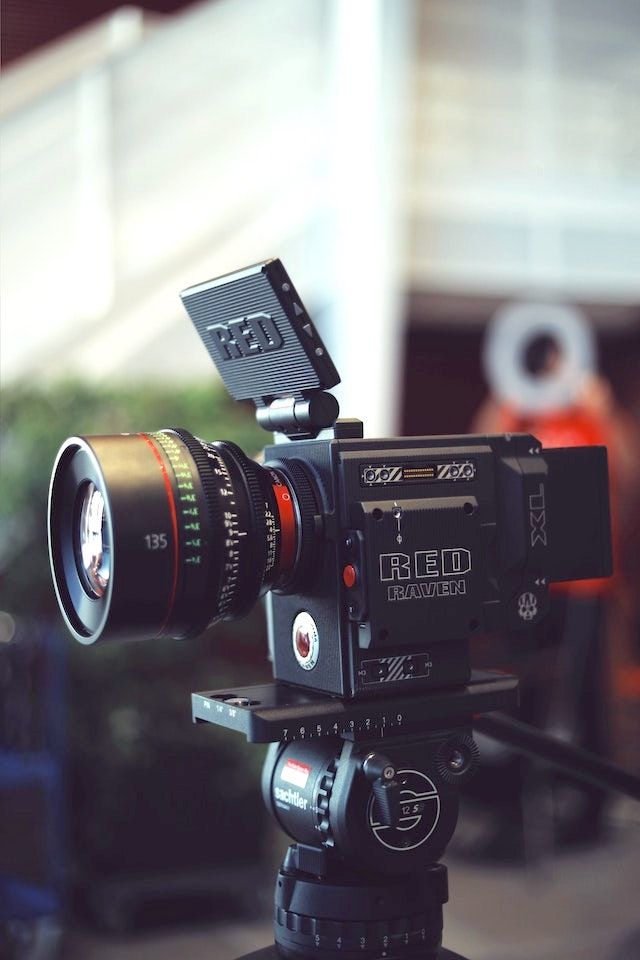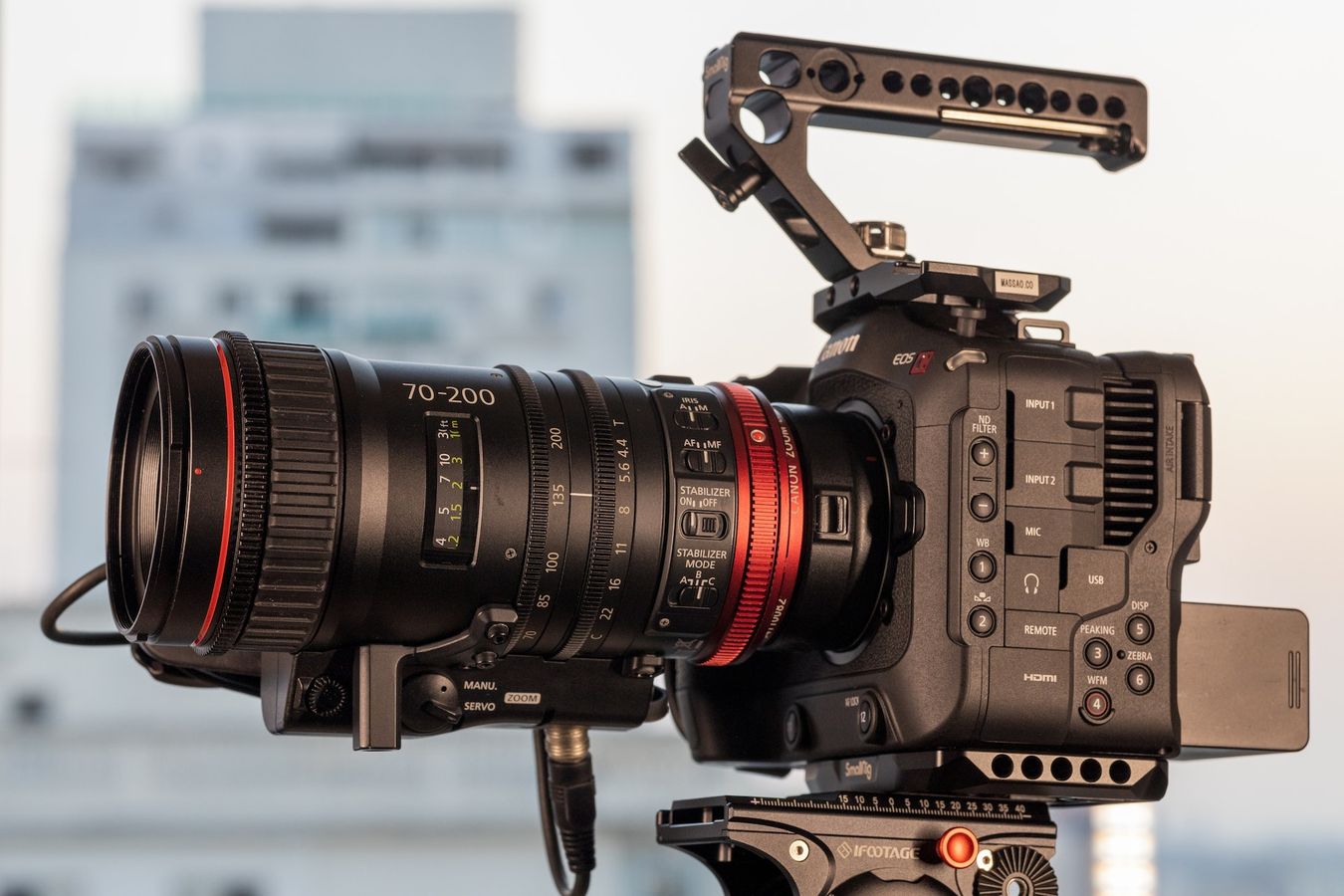Are you a budding independent filmmaker looking to ace your first feature? Perhaps you’re a seasoned cinematographer aspiring to hone your craft? Whatever your filmmaking dreams, you’ll need a cinema lens on-hand to make them a reality. Every film buff knows fantastic equipment lies behind the world’s best cinematography – and cinema lenses can make the difference between a dull, grainy shot and a dazzling piece of footage.
So, whether you’re building a film studio, working for a video production company, or want to learn more about film equipment, we’ve put together a quick guide to help you navigate the confusing world of lenses. If you need more general advice on buying a video camera setup or microphone, we've got your back!
What are cinema lenses, and how do they differ from photo lenses?
As the name implies, a cinema lens is built with filmmakers in mind. If you’re looking to enter a short film competition, UK film festival or wondering how to get corporate video clients, cinematic lenses are an absolute must. So, what makes them different from traditional photo lenses?

1. Size
Cine lenses tend to be larger and heavier than standard photographic lenses. The reason behind their bulkiness is they include a range of manual settings to give cinematographers maximum control over their output. It’s also worth noting that while traditional lenses come in a range of sizes, cinematic lenses come in a standard size to ensure they’re compatible with any film camera.
2. Price
Unsurprisingly, cine lenses cost several times more than most photo lenses, as they’re very technically sophisticated. Whether you’re planning to hire or purchase a lens, you’ll need to account for the cost of your equipment when drawing up a video production proposal.
3. Manual settings
Most settings photo lenses are electronically adjustable. In other words, users must press a button or navigate a digital interface to face setting such as the focus and aperture. With a cine lens, however, you can adjust settings such as the zoom, focus, and iris using levers and handles on the body of the lens. While this may seem more complicated, it allows filmmakers to produce more exact results. For example, focus rings on cine lenses are rotatable past 270 degrees, offering more focus throw and, therefore, greater accuracy.
4. Image quality
Cine lenses tend to produce superior image quality compared to standard lenses. Why? Well, most cine lenses are manufactured using premium quality glass to ensure images are as crisp as possible. They’re also designed to ensure image colour and sharpness remain consistent throughout every shoot. Most importantly, cine lenses are designed with lighting and exposure in mind, allowing users to fine-tune the aperture and iris ring to ensure the perfect amount of light passes through the lens.
Discover houses for your next film project
Choose from 1000+ spaces and locations on Tutti and deal directly with space hosts for a quick, hassle-free booking process.

What makes a lens a cinematic lens?
While it can be tricky to differentiate cinematic lenses from standard lenses at first glance, they come with a range of distinct features designed to aid filmmakers, including:
1. High-quality focus control
One of a cinematographer’s most significant responsibilities is to maintain a steady focus while switching between subjects or tracking a moving subject. To achieve this, they must gradually rotate the focus ring while ensuring the picture remains crisp – a tricky move to pull off with a regular lens. Fortunately, cinematic lenses are equipped with precise focus controls, including a focus ring with clear markings and hard stops at the desired maximum and minimum rotation points.
The focus ring of a cinematic lens is also designed to mitigate a phenomenon known as “focus breathing”. Put simply, focus breathing describes the change in focal length filmmakers encounter when adjusting the focus distance of their lens. As the focus moves from close to infinity, focus breathing can alter the view angle and magnification and ruin the cinematographer’s shot. Fortunately, the focus rings on cine lenses are tailored to minimise this issue and avoid unnecessary reshoots.
Finally, it’s worth noting that cinematic lenses are parfocal lenses, meaning they can maintain focus on specific subjects during zooming. Non-parfocal lenses often lose focus while zooming in and out, making them unsuitable for films.

2. Light and aperture features
As we’ve explored in previous articles, high-quality film lighting is crucial for capturing compelling shots that suit the mood of your film. However, it’s not just the lighting setup that affects how your footage looks and feels. Filmmakers must fine-tune their lenses to capture the right look and feel for their project.
Unlike photo lenses, cine lenses have iris rings with T-stop markings that provide precise measurements of how much light is passing through the lens (as opposed to the width of the lens opening). This feature ensures that exposure is consistent in every scene, regardless of weather conditions or time of day. What’s more, cine lenses don’t contain clickable features, ensuring cinematographers can adjust their settings more smoothly and avoid any jarring image transitions.
3. Special lens glass
Cine lenses are made using high-end glass that helps videographers produce sharp results even in adverse lighting conditions. For example, cine lenses come into their own in direct sunlight or in environments with high-contrast lighting. High-quality glass can also help reduce barrel distortion, vignetting, and colour fringing (also known as colour distortion). Finally, some filmmakers may be pleased to hear that cinema lenses can be used to create more experimental out-of-focus footage – great for artsy films and dream-like sequences!

4. Internal zoom adjustment
Like most lenses, cine lenses allow users to zoom in and out by rotating a simple zoom ring. However, what differentiates cine lenses from photo lenses is their inability to change length. Instead, the zoom control alters the focus distance internally, ensuring the camera stays still and balanced throughout the shooting process.
5. A sturdy and sophisticated body
Cinematic lenses are built to withstand harsh environments and last many years. Most cine lenses are manufactured using durable metal that won’t rust or degrade. What’s more, they’re often designed to look as sleek and sophisticated as possible – great news for budding cinematographers who want to appear professional! While cine lenses tend to be much more expensive than their standard counterparts, you can consider them a sound investment for your future as an artist!

What focal length is most cinematic?
Today’s directors use a wide array of focal lengths to generate eye-catching effects and evoke a range of feelings in their viewers. As such, the question of which focal length is most cinematic is essentially subjective. That said, 28mm lenses are often cited as the most used in cinema history.
Offering a view a little wider than the average person’s field of vision, the 28mm lens emulates a sense of reality in the viewer. At the same time, it allows cinematographers to incorporate wide shots, close-ups, and landscape scenes without appearing unnatural or deliberately ‘artsy’.
35mm focal lengths are also very popular, offering an aspect ratio of 1.85:1. A 35mm lens will draw attention to a subject while incorporating a generous proportion of background scenery. As such, this focal length is popular for interviews and commercials.
[youtube https://www.youtube.com/watch?v=JAZ7mXRDa7M]
How many lenses do you need for filmmaking?
The number of lenses you utilise during the filmmaking process will depend on the length and style of your feature. While some directors may require a combination of wide-angle and zoomed-in shots, others may wish to maintain a standard-sized image for the duration of the feature. Whether you plan to use a single lens or five, it’s important to purchase or hire them well in advance of your shoot to optimise video production workflow!

So, how many cine lens types are available, and how can you use them? Here are some of the most popular options:
1. Wide-angle lenses (24mm – 35mm focal length)
Wide-angle lenses have a relatively small focal length and generate wide images. Filmmakers often use these lenses to shoot gorgeous landscapes or to include as much background detail as possible. However, it’s worth noting that filming super close-up shots with a wide-angle lens is likely to produce visual distortions in your footage.
2. Standard lenses (35mm – 70mm focal length)
As mentioned above, standard lenses tend to produce images that emulate the view of the human eye. While 35mm are very popular among film directors, 50mm lenses represent a versatile option for all filmmakers. As well as minimising visual distortion, 500mm lenses are great for capturing naturalistic footage that flatters human subjects. If you’re unsure about what type of lens you’ll need for your project, you can’t really go wrong with a standard lens.
3. Telephoto lenses (70mm – 300m focal length)
Telephoto lenses compress and magnify even small details in an image. Also known as long lenses, telephoto lenses are less commonly used than standard and wide-angle lenses. Typically, these lenses are used on productions with large sets or to capture extensive location details.
4. Anamorphic lenses (40mm – 100mm focal length)
Anamorphic lenses offer super-wide aspect ratios for capturing a wide field of view. They work by altering the dimensions of an image on one axis, squeezing as much footage as possible onto a narrow sensor. Anamorphic lenses may produce slight distortion while providing warmth within the frame.
[youtube https://www.youtube.com/watch?v=g4EHW1S54Uo]
What lenses does Quentin Tarantino use?
Quentin Tarantino – known for directing a range of blockbusters, including Pulp Fiction (1994), Death Proof (2007), Django Unchained (2012), and Once Upon a Time in Hollywood (2019) – is known for his love of wider focal lengths. Typically, his films involve 40mm or 50mm anamorphic lenses. For The Hateful Eight (2015), however, Tarantino’s cinematographer used a set of vintage Ultra Panavision 70 lenses that had last seen action in the 1960s. These lenses allowed the director to achieve a very wide aspect ratio of 2:76:1, capturing many of the film’s characters in a single frame and displaying how they react to one another. In fact, Tarantino loved the effect of the vintage lenses so much he went on to use them in Once Upon a Time Hollywood.
What lenses does Steven Spielberg use?
Spielberg is well-known for preferring a 21mm lens for creating his blockbusting movies, the likes of which include Jaws (1975), Jurassic Park (1993), and Schindler’s List (1993). This wide lens is perfect for creating canvas-like shots that show the full beauty (or, indeed, terror) of a landscape. Just think of the herds of dinosaurs in Jurassic Park! Using wide-angle lenses for close-up shots can also make the viewer feel as if they’re immersed in the film’s action – perfect for thrillers and horror movies.

Experiment with cine lenses today!
As you can see, choosing the right lens represents a vital part of the filmmaking process. If you’re new to the game, why not hire a couple of cinematic lenses and check out some of the best places to photograph in London to experiment? Practice makes perfect, after all!
Of course, lenses and equipment aren’t the only factors to consider when prepping for a shoot. Whether you're searching for the perfect cinematic backdrop for your film, or an ideal background for your YouTube video, it's crucial that you also consider what's going on in front of the camera. So, as previously explored in our article on famous music video locations, you must also pick the perfect space to film! Fortunately, finding amazing locations has never been easier thanks to Tutti. For more information and to browse our spaces for hire, check out our website today.
Find film and video studios with Tutti
Choose from 1000+ spaces and locations on Tutti and deal directly with space hosts for a quick, hassle-free booking process.
















